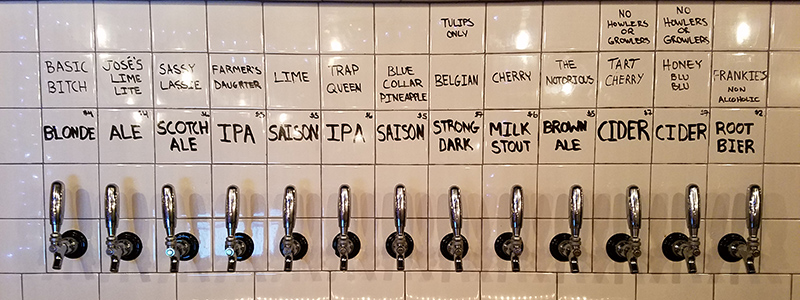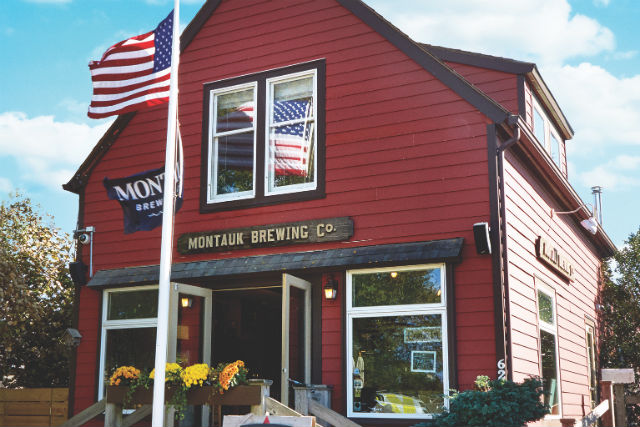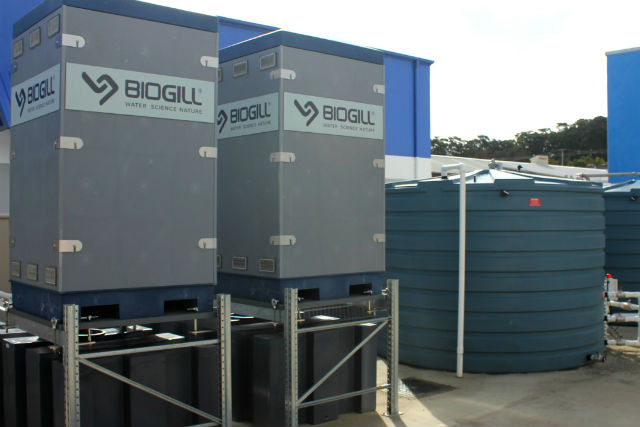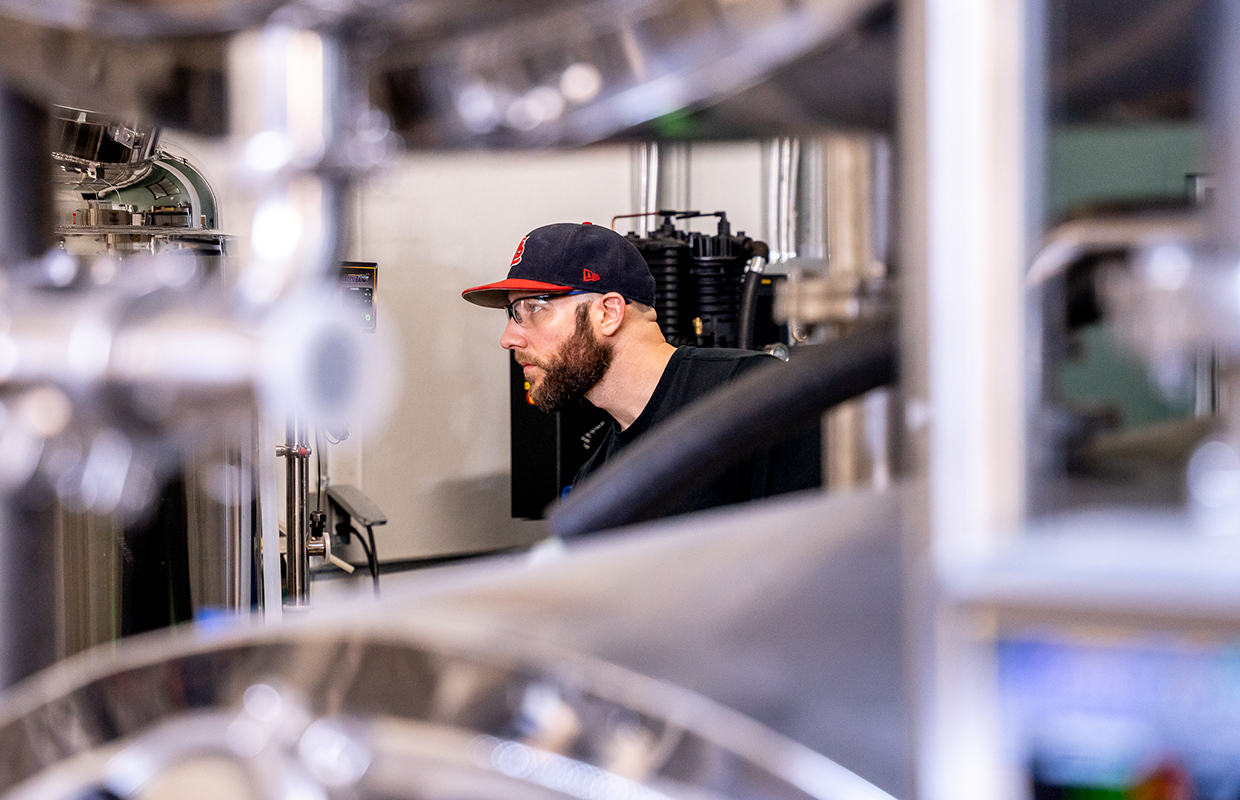
With water being a central core to all brewing, sustainability and making sure water sources are clean are vital to a successful brewing operation.
More and more, breweries look to make the process of water management more of a priority. Testing, re-testing and checking again is standard. Finding ways to reduce usage also has a precedence over many other aspects.
When water sources are put into question, it can be a matter of public relations as well.
The city of Flint, Michigan rose to national prominence in early 2016 when it was reported that high levels of lead was detected in the water, which was leading to sick children in the city.
A federal emergency was declared on Jan. 16 for the high lead levels in the water after switching its source to the Flint River in the spring of 2015. Tenacity Brewing, a brewery in the downtown area that opened in 2015 with a 2.5-bbl system now gets its water from a Detroit pipeline that delivers water from Lake Huron.
On its Facebook page back in January, the brewery stated it has been lead free since the start. To make a point, it posted an official water report from a January 21 test on January 22 without a comment.
“When the challenges our community was facing with water became front page headlines, we were able to react quickly and be transparent with our test results,” said co-founder of Tenacity, Jason Caya. “Of course, it was reassuring for customers to know that it has been a standard practice for us.”

Thankfully, Caya said, Tenacity does not believe that its image struggled due to the water crisis.
“Obviously, being out front with clear, transparent information was critical,” he said about posting testing results online. “But we found, once we addressed it, everyone continued supporting the brewery and enjoying our beer.”
In Toledo, Ohio, a toxic algae bloom poisoned the main water source, the shore of Lake Erie, in the summer of 2014. Nearly 500,000 homes were affected for a while as residents were told not to drink that water. Of course, that could have done harm to a production brewery and brewpub like Maumee Bay Brewing as well, which has been open since 1995. Yet rigorous testing helped prevent any disasters, much like how Tenacity was able to move past the problem.
In fact, said Brewing Operations Manager Craig Kerr, the biggest challenge the brewery seems to have is temperature fluctuation between winter and summer.
“It can vary nearly 20 degrees from the tap,” he said. “We are fortunate that the water we use is generally low in hardness and pH neutral so water treatment for us and specific beer styles is rarely necessary.”
Municipal water treatment is done by the local water department with many results available online for review and emailed to the brewery regularly, Kerr added.
“Over the past few years, this area has been at the forefront in the development of new standards, testing protocols and water treatment technology for municipal water programs and has built a sophisticated tiered monitoring and response system from intake to filtration plant,” he said.
For Santa Fe Brewing, the New Mexico desert can be a much different animal. Finding a water source meant digging a well, said Brewmaster Brian Lock. The brewery does have a backup supply from the municipality of Santa Fe for cleaning and other uses.
The brewery is also currently installing a complete waste water treatment system to treat all effluent and reuse for irrigation on site.
Water conservation is “very critical since we are in the desert,” he said.
The same words echo on the west coast. In Rancho Cordova, California, David Mathis, a co-founder and brewer for American River Brewing said looking to be sustainable is essential.
“California is suffering through years of severe drought,” he said. “Water restrictions are in place in many counties within the state and mandatory conservation steps are in place throughout our region.
“We monitor the usage of our water with flow meters and SOPs that we have had in place since our first day of operation. We recapture as much water as we can during the brewing process and cleaning procedures.”
Mathis said that on brew days, his team checks the water pH every time and adjustments are made based upon water analysis for both mash-in and sparging.
“Any additional QC of our water revolves around current water analysis from the water department,” Mathis said about the water info they receive from a local reservoir which is primarily Sierra Nevada snow melt. The water, he said is soft and requires limited filtration.
“Like most breweries, we carbon filter all processed water to remove chlorine,” Kerr said about standard procedures at Maumee Bay in Ohio, “testing of our water is done monthly in house to tell us the condition of our media.”
Caya says in Flint, both before and after the crisis continuous testing of water is done.
“Knowing the in’s and out’s of your water is essential,” he said. “So, we continuously test our water. We always have and always will.”
Their tests including taking water from multiple faucets — before and after softening and filtering — to a water testing laboratory.
“They give us a report on everything in our water,” Caya said. “It is incredibly thorough and costly, so we do every month or so. Meanwhile, we test the water ourselves before and during every brew. We want to make sure that the parts per million of different metals are where we want them to be as well as the pH.”
Being a startup nano-brewery, Tenacity is constantly working towards better beer.
“The last year has taught us a lot,” Caya said. “Beyond water, we continue to eliminate variables and improve our execution. Our quality has improved and our beer has never been better. But we will always be striving to brew extraordinary, creative beer to serve and celebrate our community.”




1 Trackback / Pingback